Our courses are the interface. But the real power lies in the knowledge — the software — that rewires how leaders think, feel, and act under pressure.
Activation Pathways for Workplace Change
Three Levels of Engagement
In keeping with Readiness Pathways, our programs are designed to meet learners where they are, recognising that not everyone has the same level of commitment or aspiration for professional development. To support this, we offer three distinct pathways:
1. Base Level
This entry‑level pathway is inclusive and flexible, catering to participants across the spectrum—from those hesitant to engage to those willing to attend classes and complete selected online activities. An initial IRVEY assessment may be used to identify service needs, but there is no final assessment and no requirement to demonstrate gains. The focus is on exposure, reflection, and practical insights that participants can apply at their own pace.
2. Intermediate Level
For learners ready to take the next step, the Intermediate pathway introduces structured activities, reflection exercises, and optional diagnostics. Participants are encouraged to apply the tools in workplace and personal contexts, building confidence through guided practice. Successful completion is recognised with a Certificate of Completion (non‑CPD), providing evidence of engagement without the pressure of formal accreditation.
3. Advanced CPD Level
For those seeking formal recognition and deeper development, we provide accredited training through the CPD Group. This pathway requires full participation in all activities, with learners demonstrating engagement and competency to achieve certification. In some courses, a post‑IRVEY assessment is included to measure growth and readiness, ensuring participants can evidence their progress.
Just to let you know, CPD courses are not formal qualifications. For example, the CPD Transformational Leadership Program will not qualify you to become a leader, but it will equip you with the knowledge and skills to become a far more effective one. We are always happy to discuss the distinction between CPD recognition and traditional qualifications.
Flexible Progression
Learners begin in the Base Course and can upgrade at any time to Intermediate or Advanced levels. This streamed approach ensures organisations can provide inclusive training opportunities for all staff. It offers a structured, accredited pathway for those who wish to build recognised capability in leading and managing change.
Flexible Pricing
Every organisation pays a fixed project fee that covers diagnostics and Base training for all staff. This ensures inclusivity — everyone has access to foundational learning. Individuals or groups can then choose to upgrade to Intermediate or Advanced levels at clear per‑person rates, allowing motivated staff to pursue deeper development.
The project fee also includes the creation of a tailored Learning Pathways document that provides a structured roadmap for your organisation. The Learning Pathways document provides a clear, practical roadmap that turns diagnostics into actionable steps, building confidence, capability, and sustainable change across all levels of staff.
Learning Levels
| Level | Description | Certificate | Effort Level |
|---|---|---|---|
| Base | Minimal effort, video-based | No certificate | Low |
| Intermediate | Structured activities, reflection exercises, and optional diagnostics | Certificate of Completion (non‑CPD) | Moderate |
| Advanced | Full program with assessments | ✅ CPD Group certificate | Moderate to high |
Overview
Our courses are designed as Readiness Pathways — flexible enough for those who simply want to watch and learn, yet rigorous enough to support professionals seeking CPD recognition. Each program offers progressive levels of engagement, moving from accessible video‑based learning through to applied practice and formal accreditation.
How It Works
At The Change Gym, we design programs to meet people where they are. Not everyone has the same level of commitment or aspiration for professional development, so we offer three levels of engagement:
Base Level
The Base Level is designed as an entry point for individuals and teams who want to begin exploring change readiness without committing to intensive programs. It provides flexible, low‑barrier pathways that emphasise:
Exposure to key ideas – depending on your identified needs and the problems you want to resolve.
Confidence building – helping participants see that readiness is achievable and practical.
Shared insights – encouraging reflection and discussion in ways that suit each context.
Practical application – simple exercises and prompts that can be adapted to everyday work.
There is no fixed course requirement at this level. Organisations and individuals can choose formats that fit their needs — whether group discussions, self‑paced modules, or introductory workshops. The emphasis is on accessibility and flexibility, ensuring that anyone can begin the journey toward readiness.
Intermediate Level
All Base Level activities
Additional structured activities, guided reflection, optional diagnostics and coaching.
Tutor support and a Certificate of Completion (non‑CPD).
Focus: building confidence and applying tools in workplace or personal contexts.
Advanced Level (Accredited CPD)
All Intermediate Level activities
Accredited CPD points through the CPD Group (with certificate).
Full participation in all activities, with assessment tasks and case studies.
Post‑IRVEY assessment in some courses to measure growth and readiness.
Focus: recognised capability in leading and managing change.
Note: CPD courses are not formal qualifications, but they provide evidence of professional development.
Strategic Readiness Training
Change is inevitable, but success depends on readiness. The Strategic Readiness Training (SRT) equips leaders and teams with the tools to face uncertainty with confidence, adaptability, and clarity.
Grounded in Steve Barlow’s PhD research into personal change readiness, the program introduces five lenses of thinking — Generative, Critical, Balanced, Functional, and Persuasive — each offering a distinct way to analyse challenges and mobilise effective responses.
Delivered in five focused lessons (plus an optional integration simulation), SRT blends short framing inputs, case studies, and interactive exercises. Participants learn to distinguish between what is possible in principle and what is achievable now, identify non‑negotiables, balance stability with disruption, and craft persuasive messages that build trust and commitment.
Flexible in format — online or onsite — the program is practical, evidence‑based, and designed to embed resilience. SRT ensures organisations don’t just survive change but leverage it for growth.
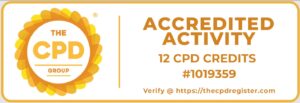
Personal Change Fitness Program (PCFP)
Change is always personal. How individuals respond — with engagement or resistance — determines outcomes. The PCFP helps people build the psychological capacity to adapt, sustain motivation, and thrive in shifting environments.
Developed from Steve Barlow’s PhD research into personal change readiness, the program is grounded in the idea that change is a process, not a single event. It guides participants through five stages of change, highlighting the demands at each stage and the resources needed to progress.
Structured as progressive “workouts,” PCFP develops seven core capacities: motivation, agency, insight, vision, trust, balance, and empowering beliefs. It also introduces systems thinking to ensure progress is sustainable and does not compromise wellbeing or relationships.
Self‑paced and practical, each workout blends reflection, real‑world examples, and prompts for personal application. Participants learn to move beyond resistance, make better decisions under pressure, and build resilience. PCFP reframes change as a challenge for growth, valuable across all sectors, especially healthcare, education, and community services.
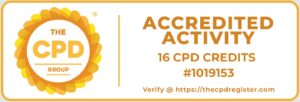
Change Readiness Superpowers
The Change Readiness Superpowers Training helps organisations embed change readiness into their culture — shaping how people think, act, and respond to uncertainty. Based on Steve Barlow’s PhD research into personal change readiness, the program develops the psychological capacities that underpin resilience, adaptability, and collective confidence.
Participants explore seven “superpowers” — motivation, agency, insight, vision, trust, balance, and empowering beliefs — each treated as a practical capability that can be strengthened. These superpowers are not abstract concepts; they are the everyday mindsets and behaviours that determine whether change is resisted or embraced.
Through progressive, self‑paced modules, the training blends reflection, real‑world examples, and prompts for application. It equips individuals and teams to sustain energy, make sound decisions under pressure, and build confidence in the face of uncertainty. By embedding these superpowers into organisational culture, the program ensures readiness becomes a shared capability, not just an individual trait.
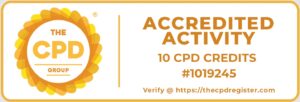
Change Management Training
The Change Management Training equips leaders and teams to implement change effectively while embedding readiness into organisational culture. Drawing on widely accepted research on change management and seen through the lens of change readiness, the program bridges theory and practice to demonstrate how change can be sustained.
Participants learn to balance disruption with stability, anticipate resistance, and build the psychological and cultural foundations that make change stick. The training introduces established change management frameworks, then reframes them through readiness principles — highlighting how people think, act, and sustain change in everyday contexts.
Delivered through structured modules, case studies, and reflective exercises, the program is both theoretical and practical. It helps organisations move beyond short‑term fixes to embed readiness as a shared capability. By integrating research with applied practice, Change Management Training ensures organisations can thrive in environments of constant uncertainty.
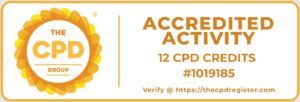
Transformational Leadership Program
Transactional leadership has its place, but it only goes so far. To change cultures and grow people, leaders need to understand how transformational leadership works and develop the right skills. The Transformational Leadership Program, based on Steve Barlow’s PhD research into personal change readiness, is a reflective, capability‑building journey that develops the psychological depth and behavioural authenticity required to lead in complex systems.
Grounded in systems theory, the Cynefin framework, and contemporary leadership science, the program positions change fitness as the foundation of authentic leadership, especially in volatile, uncertain, complex, and ambiguous (VUCA) environments.
Delivered in six structured units, the program combines audio lessons, transcripts, reflective exercises, coaching, and guided reading. Participants explore the psychological foundations of exceptional leadership, strengthen their change fitness across seven dimensions, and learn to mobilise others, foster trust, and model adaptive culture.
This program helps leaders move beyond control to clarity, courage, and coherence — becoming the kind of people others want to follow.
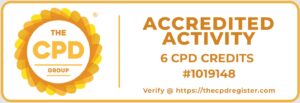
Continuing Professional Development (CPD)
Our programs offer a CPD pathway for those wanting internationally recognised CPD accreditation. This is not the only pathway we offer, but it’s reassuring to know that all our courses have undergone rigorous assessment by a UK accrediting body.
Continuing Professional Development (CPD) is the ongoing process of learning, growth, and skills enhancement that professionals undertake to stay current, competent, and confident in their roles. It goes beyond formal qualifications, focusing on practical, real-world learning that builds capability step by step. CPD ensures individuals and organisations remain agile, adaptive, and ready to meet new challenges in a changing environment.
The CPD Group
The CPD Group is an independent accreditation body that supports organisations and professionals in delivering high-quality learning experiences. They provide trusted CPD accreditation services, helping training providers, employers, and educators demonstrate that their programs meet recognised standards of excellence. By working with the CPD Group, organisations can give learners confidence that their development pathways are structured, credible, and aligned with industry best practice.
We have developed a suite of diagnostic assessment tools to support the Adaptive Intelligence Cycle, each designed to reveal different dimensions of organisational readiness.
IRVEY – looks at the personal foundations of readiness (motivation, agency, insight, vision, beliefs, trust, balance). It shows where individuals may struggle and suggests management strategies to build resilience and engagement.
Strategic Readiness (SR) Survey – measures organisational capability and openness across six domains (scanning, alignment, deployment, development, leadership, culture). It shows what the organisation can do and how willing it is to act.
Readiness Engine (RE) Survey – tests applied reasoning under pressure through five scenario questions (Sense → Interpret → Decide → Act → Learn). It reveals how leaders actually think and act when faced with complexity.
Together, these three tools provide a 360° view of readiness:
IRVEY: Individual dispositions — do people have the motivation, agency, and beliefs to engage?
SR Survey: Organisational structures — is the system capable and open to change?
RE Survey: Applied discipline — do leaders use the Readiness Engine effectively in practice?
Accessibility in The Change Gym Programs
All our programs are designed with accessibility in mind. This ensures that participants with diverse learning needs can engage meaningfully, regardless of background, role, or preferred learning style. You can adjust the visual components by clicking on the blue icon on the lower left of page.
Key Accessibility Features
- Multi-modal delivery
Programs combine written content, audio narration, visual metaphors, and interactive exercises to support different cognitive styles. - Self-paced progression
The PCFP allows participants to engage at their own speed, revisit modules, and reflect privately — ideal for neurodivergent learners or those managing fatigue, anxiety, or cognitive load. - Short-format learning
Superpowers and CMT modules are delivered in short, digestible sessions with clear structure and practical takeaways — reducing overwhelm and supporting retention. - Real-world application
Each course includes practical components (e.g., applying learning to a live change initiative) that reinforce understanding through experience rather than just theory. - Reflective prompts and scaffolding
Exercises are designed to guide participants step by step, with built-in reflection questions that support metacognition and emotional regulation. - Optional coaching and peer support
Participants can access one-on-one coaching or engage in group reflection, providing relational scaffolding for those who benefit from dialogue and encouragement. - Plain language and layered depth
Content is written in clear, professional language, with metaphors and analogies that make abstract concepts more relatable. Deeper insights are layered in, allowing learners to engage at their own level. - Cultural and emotional sensitivity
Programs acknowledge the emotional journey of change, including fear, loss, and resistance. This helps participants feel seen and supported, especially those with trauma-informed needs or mental health considerations. - Synchronous and asynchronous options Participants can engage in real-time group sessions (synchronous) and access materials on demand (asynchronous), allowing for flexible participation across time zones, energy levels, and work schedules.
Our courses are designed to be engaging, flexible, and practical, combining multiple modes of learning to suit different preferences and needs. Key features include:
Online Video Content – Short, accessible modules that introduce concepts and provide clear explanations.
AI‑Powered Conversations – Interactive dialogues that help learners explore ideas, test understanding, and apply tools in real time.
Tutor Support – Guidance and feedback from experienced facilitators to ensure learners feel supported throughout their journey.
Quizzes – Quick checks for understanding that reinforce key points and build confidence.
Learning Activities – Practical exercises designed to connect theory with workplace or personal application.
Assessment Tasks – Structured opportunities to demonstrate engagement and competency, especially in accredited pathways.
Case Studies – Real‑world scenarios that anchor learning, encourage reflection, and highlight practical relevance.
- Coaching – Coaching and face-to-face contact is integral to some courses (advanced level)

